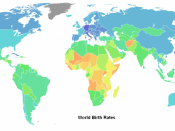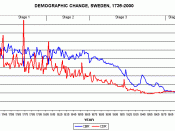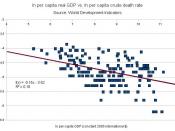Kenya is both one of the poorest countries of the world and of Africa in which over 53% of its inhabitants are living below the poverty line surviving on less than a dollar a day. Kenya gained independence in 1963 and has experienced development up until the 1980's when the development process came to stop. However, development started once again in the 1990's and also slowed down; Kenya has experienced many fluctuations in the development process. Corruption is one of the main reasons as to why development has been a slow process in Kenya. As a result, unemployment remains a major issue, followed by a decline in infrastructure, and an ineffective judiciary system. Due to unemployment, many, over 17 million people in Kenya are trapped in the vicious cycle of poverty: there are no jobs available, therefore there is little savings in the economy, resulting in little or no investment, therefore there is no entrepreneurship resulting in a weak, unfruitful economy.
The main time frame in which we analyzed and studied Kenya's economy is between 2002 to 2006. In 2002, the GDP per capita was roughly $1000 (USD), $993 to be exact. This however has increased very slowly and is currently $1,445 which is very poor- The total GDP of the nation is 48.3 billion which ranks 76th. Inflation has been another major issue as it was under control in 2002 and 2003 (3%, 2% respectively) but it has soared after 2004 and is currently at 12% which is a major concern. This means that there has been a substantial rise in prices over a period of time, but the incomes have remained the same, therefore the real value of money or purchasing power has gone down leaving many Kenyan's unable to even provide for themselves. The percentage of people...


